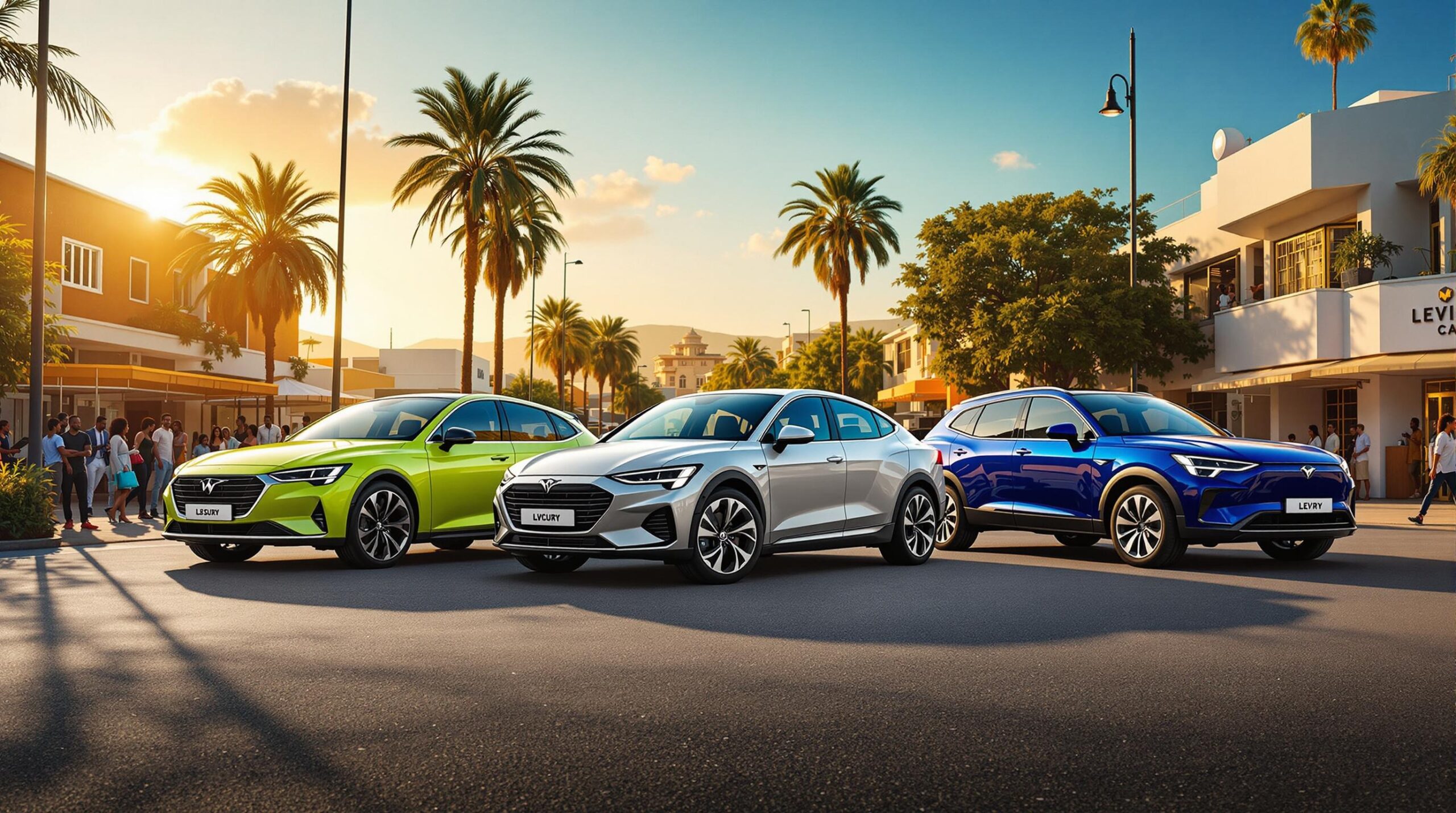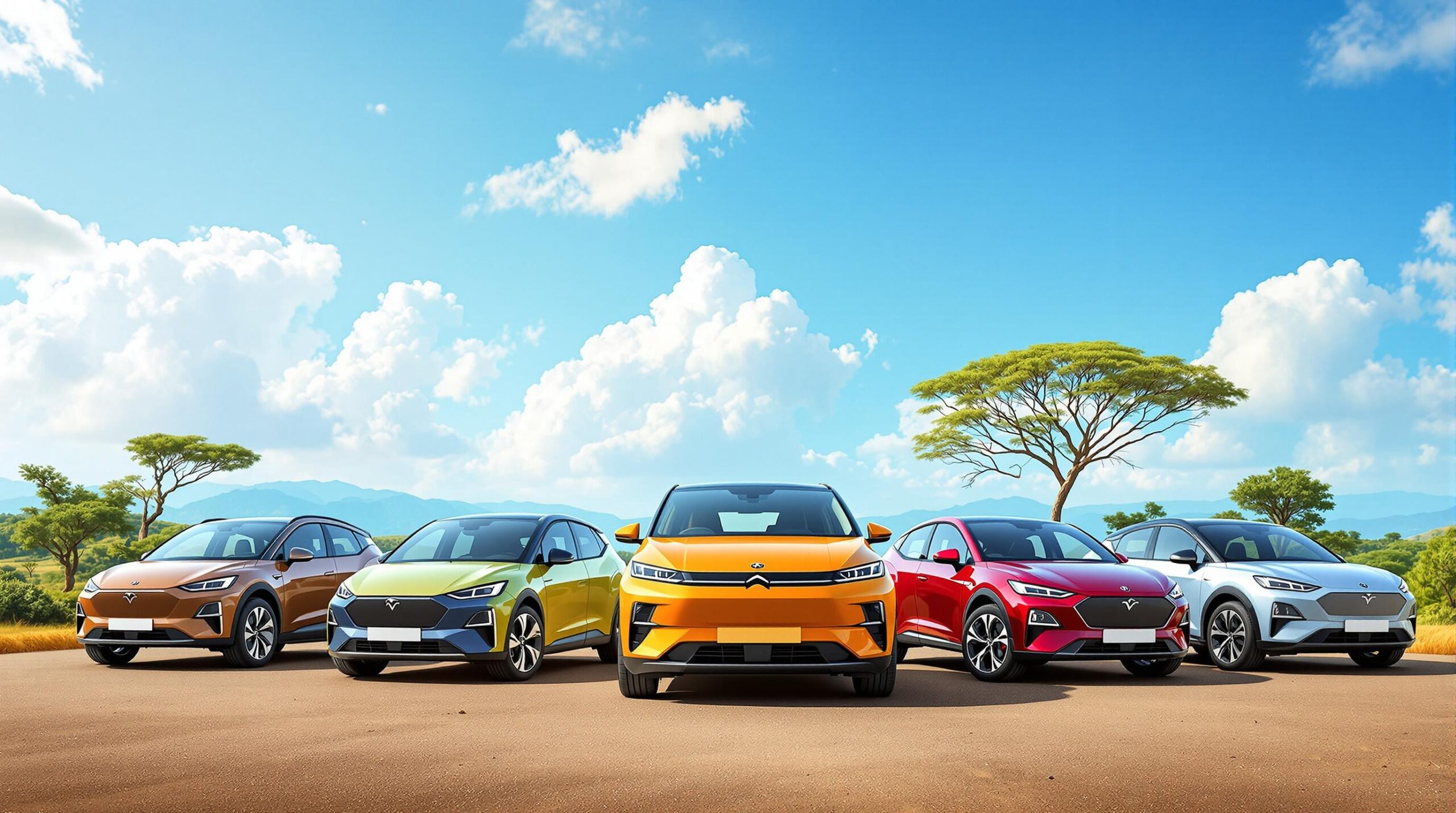
Electric vehicles (EVs) are reshaping logistics and transportation in Africa, offering significant cost savings and reducing greenhouse gas emissions by up to 43%. Here’s what you need to know:
- Cost Savings: EVs have lower operating costs. Electric trucks consume less energy (2.3 kWh/mile vs. 3.5–5.3 kWh/mile for diesel trucks), and electric two-wheelers are 25% cheaper to operate over five years.
- Environmental Benefits: Medium- and heavy-duty electric trucks cut CO₂ emissions by 19–43%, improving urban air quality.
- Challenges: Limited charging infrastructure, unreliable electricity, high upfront costs, and policy gaps hinder widespread EV adoption.
- Opportunities: Solar charging networks and battery-swapping systems are gaining traction, especially for two-wheelers and light commercial vehicles in urban areas.
- Incentives Needed: Removing import duties and offering tax breaks could accelerate EV adoption.
TCS | Zimi Charge CEO Michael Maas on electrifying SA’s …
Cost Benefits for Logistics Companies
Electric vehicles (EVs) are transforming logistics operations in Africa by cutting costs and boosting efficiency.
Fuel and Maintenance Savings
Switching to EVs can significantly lower operating expenses. Electric motors are more efficient than traditional combustion engines, leading to reduced fuel costs and maintenance needs due to fewer moving parts. For example, diesel trucks use 3.5–5.3 kWh per mile, while EV trucks consume only about 2.3 kWh per mile. These savings highlight the financial advantages of adopting EVs.
| Cost Component | Traditional Vehicles | Electric Vehicles | Savings |
|---|---|---|---|
| Energy Consumption | 7.8× higher | Baseline | 87% reduction |
| Lifetime Operating Costs | Baseline | 62% lower | 62% savings |
| Solar Charging Benefit | N/A | Additional 19–47% reduction | Up to 47% extra savings |
Current African EV Incentives
African countries are offering various incentives to encourage EV adoption. However, many nations, including Algeria, Egypt, Angola, and Libya, still maintain fuel subsidies ranging from 50% to 78%. While these subsidies currently favor traditional vehicles, a shift in policy could greatly accelerate the adoption of EVs.
"Reliability is the most pressing concern in the trucking industry."
– Michael Scheib, head of electric trucks for Daimler Trucks North America
Performance in African Conditions
EVs are proving effective even in Africa’s challenging environments. They perform well under harsh conditions, and when combined with solar charging infrastructure, they become even more practical. For instance, electric buses have been shown to reduce CO₂ lifecycle emissions by 60% compared to diesel buses. These advantages, along with lower operating costs, make EVs an appealing choice despite their higher initial cost.
Green Transport Solutions
Carbon Reduction Results
Electric vehicles (EVs) are doing more than cutting costs – they’re also making a big dent in CO2 emissions in African logistics. Medium- and heavy-duty trucks currently release about 437.9 million metric tons of CO2 every year. By comparison, electric trucks cruising highways slash greenhouse gas emissions by 19–43% compared to diesel trucks. This reduction not only lowers overall emissions but also improves air quality in cities.
Solar Charging Networks
To maximize the benefits of EVs, solar-powered charging networks are being introduced across Africa. With abundant sunlight, these networks tackle energy challenges while supporting cleaner transportation.
"The symbiosis between smart minigrids and electric mobility has the potential to improve the cost and reliability of energy access for off-grid communities while providing low-carbon transport services." – Rupert Gammon, Institute of Energy and Sustainable Development, De Montfort University
A standout example is The Gambia’s Solar Taxi project, launched on July 3, 2018. This initiative uses a Nissan e-NV200 electric minivan powered by a 4.5 kWp solar minigrid in an off-grid village. During a 71-day trial, the project showed promising results: average earnings of 131.31 GMD (around $2.63) per hour and 5.61 GMD (approximately $0.11) per kilometer.
Electric Mass Transit Progress
Public transit is also seeing a shift toward EVs, particularly in the taxi sector. In The Gambia, traditional taxi drivers typically spend 50–60% of their earnings on fuel. By switching to electric vehicles powered by solar charging setups, drivers could increase their earnings by 250–1,300% for local trips and up to 20 times more in tourist-heavy areas.
sbb-itb-99e19e3
Key Adoption Barriers
Charging and Power Supply Gaps
One major obstacle to EV adoption in logistics across Africa is the lack of sufficient charging infrastructure. Frequent power outages and unreliable grids make the situation even tougher. For instance, in South Africa, charging networks are underused, and the power supply is inconsistent, creating challenges for EV charging. The issue is even starker in Ethiopia, where only half of the population has access to electricity. These gaps impact not just personal EVs but also commercial fleets and logistics operations as a whole.
Purchase Price Concerns
Cost is another key challenge holding back EV integration. High upfront prices make fleet conversion difficult, and import duties further drive up costs. In South Africa, EVs face a 25% import duty, compared to just 18% for traditional vehicles. This pricing disparity significantly affects decisions to switch to electric fleets.
Take Ghana as an example. A cost analysis there shows:
| Cost Factor | Impact on EV Cost Parity |
|---|---|
| Standard Scenario | Achieved in 7 years |
| With 20% Import Duty Waiver | Reduced by 1 year |
| With 10% Interest Rate | Achieved in 7 years |
| Combined (No Import Duty + 10% Interest) | Achieved in the first year |
Missing Policy Framework
Policy gaps also slow down EV adoption. Without clear, consistent policies, logistics companies struggle to plan long-term fleet transitions. While some initiatives, like Dakar’s deployment of 120 electric buses designed for overnight charging, are promising, most regions lack comprehensive frameworks to encourage widespread EV use. Key issues include the absence of standardized charging protocols, limited incentives for electrifying commercial fleets, and insufficient regulations for developing EV infrastructure. Additionally, uncoordinated efforts to improve power grids leave companies hesitant to invest in EVs, even when the long-term benefits are clear.
Solutions and Next Steps
Africa-Ready EV Designs
The success of electric vehicles (EVs) in African logistics depends on creating vehicles suited to local conditions. Two-wheeled EVs are becoming increasingly popular because they’re more affordable and better suited to navigating heavy traffic and rough roads. As Godwin Ayetor, a senior lecturer at KNUST, explains: "In all the African countries, the ratio is shifting from the four-wheelers to the two-wheelers because they seem affordable for a small family. And they are able to maneuver a lot of traffic and bad roads".
Battery swapping technology is emerging as a practical option in African markets. It addresses common concerns like limited range and high upfront costs. In Nairobi, companies like ARC Ride have introduced around 80 charging cabinets for battery swaps, showing the potential of this model. For instance, Thomas Omao, a motorcycle taxi driver in Nairobi, pays a flat fee of 400 Kenyan shillings (about $3.00) daily for unlimited battery swaps. This is a significant saving compared to the 1,000 Kenyan shillings he would spend on fuel, allowing him to save about 600 Kenyan shillings (roughly $4.50) every day.
Developing efficient EV designs also depends on reliable charging infrastructure, making network expansion a key priority.
Building Charging Networks
After designing vehicles for local needs, the next step is building a robust charging network. Expanding this infrastructure requires collaboration between private companies and government bodies. Egypt offers a strong example of progress: MB for Engineering partnered with Wataniya Petroleum to open the nation’s largest charging station, capable of serving 14 vehicles at once with a capacity of over 330 kilowatt-hours.
Here’s a look at some successful charging infrastructure initiatives:
| Initiative | Scale | Impact |
|---|---|---|
| ARC Ride Network | 80 charging cabinets | Supports Nairobi’s growing e-motorcycle fleet |
| MB Engineering Station | 14 simultaneous charges | Egypt’s largest charging facility |
| Ampersand Rwanda | 35+ drivers network | Over 1.3 million kilometers traveled since 2019 |
Power Grid and Skills Development
Beyond charging stations, stable power grids and skilled workers are essential for EV adoption. In West Africa, less than half the population currently has access to electricity, with users facing an average of 44 hours of outages per month. Electricity costs about $0.20 per kilowatt-hour, highlighting the need for investment in infrastructure.
By 2050, West Africa may require 986,000 EV chargers to support an estimated 9.9 million EVs. Achieving this will demand around $20 billion for grid upgrades and power generation improvements.
Equally important is developing local expertise. Training programs and partnerships with educational institutions can prepare workers for roles in EV maintenance, charging station installation, battery management, and grid operations. These efforts will ensure a smoother transition to electric mobility while creating economic opportunities.
"The shift to electric transport needs to be considered alongside the investments being mobilized for implementation of the WAPP Master Plan, and integrated with planned grid upgrades at an early stage".
Conclusion
Electric vehicles (EVs) are reshaping logistics across Africa. They offer a clear advantage by cutting emissions compared to diesel vehicles and reducing operating costs over time.
These shifts highlight the need for broader system changes. Companies like Kiira Motors in Uganda show that local EV production is not just a possibility but a growing reality.
"Failure to create an enabling ecosystem for electric transport could see the region becoming a dumping ground for old ICE vehicles, setting back the continent’s carbon-emission-reduction goals as the vehicle parc continues to grow in the decades ahead." – McKinsey
To fully harness the potential of EVs, three main areas demand attention:
| Priority Area | Key Requirements | Expected Impact |
|---|---|---|
| Infrastructure Development | Grid upgrades, charging networks | Reliable power supply for EV operations |
| Policy Framework | Tax incentives, emissions standards | Faster EV adoption rates |
| Local Innovation | Manufacturing facilities, skills development | A self-sustaining EV industry |




